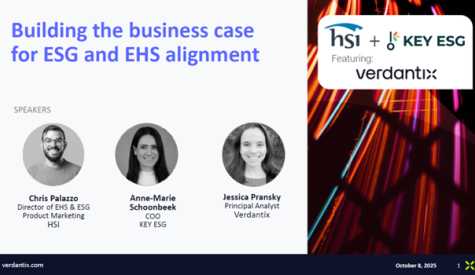What You Need to Know About PRC-028-1: Inverter-Based Resource Data Collection

As of April 1, 2025, PRC-028-1 is in effect, introducing new requirements for the collection of disturbance monitoring data on inverter-based resources (IBRs). With a phased implementation approach, this NERC standard impacts Generation and Transmission Owners (GOs and TOs) operating both Bulk Electric System (BES) and certain non-BES IBRs. Here’s what utilities and plant operators need to know to stay compliant.
What Is PRC-028-1?
PRC-028-1 establishes mandatory requirements for collecting disturbance data from IBRs – both BES and qualifying non-BES resources. The goal is to improve reliability by ensuring consistent visibility into how these resources respond during dynamic events such as faults, frequency swings, or voltage disturbances.
The standard requires entities to record three types of data across specific components in the power system.
1. Sequence of Event Recording (SER)
SER provides a time-stamped log of events that occur within the system, offering critical insights into system behavior during events like faults or disturbances.
Required at:
- Circuit Breakers of:
- Collector bus(es)
- Main power transformer(s)
- Shunt static/dynamic reactive devices (e.g., capacitor banks)
- AC-DC/DC-AC converters in applicable HVDC systems
- IBR units
2. Fault Recording (FR)
FR captures a triggered snapshot of key electrical quantities like voltage, current, and frequency during system disturbances.
Required at:
- High side of main power transformer(s)
- Shunt dynamic reactive device(s)
- Collector feeder breaker
3. Continuous Dynamic Disturbance Recording (DDR)
DDR continuously monitors the power system’s response to dynamic events like power swings, oscillations, voltage excursions, and frequency changes.
Required at:
- High side of main power transformer(s)
Good News: Most Equipment May Already Be Compatible
Many utilities already use Schweitzer Engineering Laboratories (SEL) Intelligent Electronic Devices (IEDs), which can be reconfigured to meet the standard’s requirements. To comply fully, organizations will also need:
- An SEL Real Time Automation Controller (RTAC) – SEL-3350 or SEL-3555
- A Satellite-Synchronized Clock – SEL-2407 or SEL-2488
These readily available commercial products support compliance without major system overhauls.

Compliance Deadlines
For BES IBRs
- In operation by April 1, 2025:
- 50% compliance by April 1, 2028
- 100% compliance by January 1, 2030
- If only one IBR: 100% by April 1, 2028
- In operation between April 1, 2025 and October 1, 2026:
- 100% compliance within 15 months of either the effective date or commercial operation date
- In operation after October 1, 2026:
- 100% compliance on Commercial Operation Date
For Non-BES IBRs
- In operation by May 2026:
- 100% compliance by January 1, 2030
- In operation after May 2026:
- 100% compliance within 15 months of effective date or commercial operation date
Requirement R8 Compliance
- BES IBRs: January 1, 2026
- Non-BES IBRs: April 1, 2027
Non-BES IBRs include resources or aggregates ≥20 MVA, connected to a system ≥60 kV.
Can Extensions Be Requested?
Yes. If a GO or TO is unable to meet the compliance deadlines due to factors beyond its control, it may request an extension for installing the required disturbance monitoring equipment.
Final Thoughts
PRC-028-1 aims to enhance system reliability by ensuring comprehensive disturbance data is available across the growing landscape of inverter-based resources. Utilities should assess current monitoring infrastructure, plan for any necessary upgrades, and begin phased implementation well ahead of the deadlines.
Need help navigating PRC-028-1 compliance or training your team on the new requirements? Contact us today to learn how HSI can support your compliance and operational goals.


